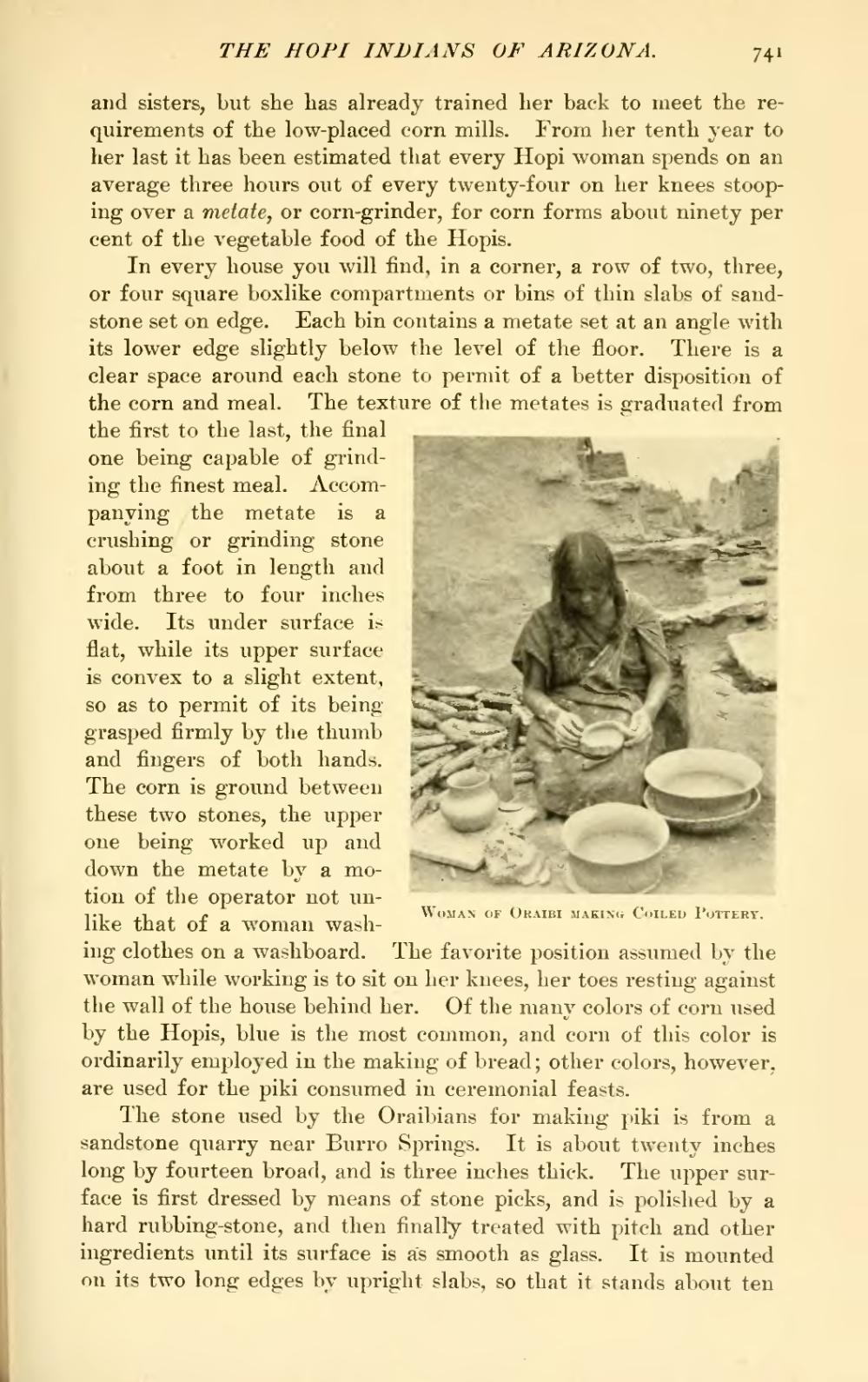and sisters, but she has already trained her back to meet the requirements of the low-placed corn mills. From her tenth year to her last it has been estimated that every Hopi woman spends on an average three hours out of every twenty-four on her knees stooping over a metate, or corn-grinder, for corn forms about ninety per cent of the vegetable food of the Hopis.
In every house you will find, in a corner, a row of two, three, or four square boxlike compartments or bins of thin slabs of sandstone set on edge. Each bin contains a metate set at an angle with its lower edge slightly below the level of the floor. There is a clear space around each stone to permit of a better disposition of the corn and meal. The texture of the metates is graduated from the first to the last, the final one being capable of grinding  Woman of Oraibi making Coiled Pottery. the finest meal. Accompanying the metate is a crushing or grinding stone about a foot in length and from three to four inches wide. Its under surface is flat, while its upper surface is convex to a slight extent, so as to permit of its being grasped firmly by the thumb and fingers of both hands. The corn is ground between these two stones, the upper one being worked up and down the metate by a motion of the operator not unlike that of a woman washing clothes on a washboard. The favorite position assumed by the woman while working is to sit on her knees, her toes resting against the wall of the house behind her. Of the many colors of corn used by the Hopis, blue is the most common, and corn of this color is ordinarily employed in the making of bread; other colors, however, are used for the piki consumed in ceremonial feasts.
Woman of Oraibi making Coiled Pottery. the finest meal. Accompanying the metate is a crushing or grinding stone about a foot in length and from three to four inches wide. Its under surface is flat, while its upper surface is convex to a slight extent, so as to permit of its being grasped firmly by the thumb and fingers of both hands. The corn is ground between these two stones, the upper one being worked up and down the metate by a motion of the operator not unlike that of a woman washing clothes on a washboard. The favorite position assumed by the woman while working is to sit on her knees, her toes resting against the wall of the house behind her. Of the many colors of corn used by the Hopis, blue is the most common, and corn of this color is ordinarily employed in the making of bread; other colors, however, are used for the piki consumed in ceremonial feasts.
The stone used by the Oraibians for making piki is from a sandstone quarry near Burro Springs. It is about twenty inches long by fourteen broad, and is three inches thick. The upper surface is first dressed by means of stone picks, and is polished by a hard rubbing-stone, and then finally treated with pitch and other ingredients until its surface is as smooth as glass. It is mounted on its two long edges by upright slabs, so that it stands about ten
